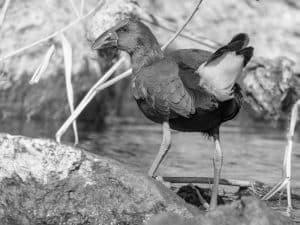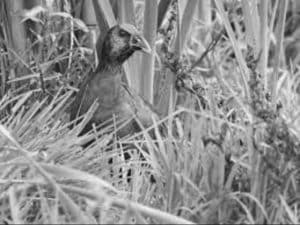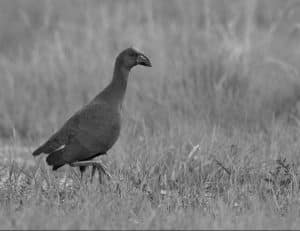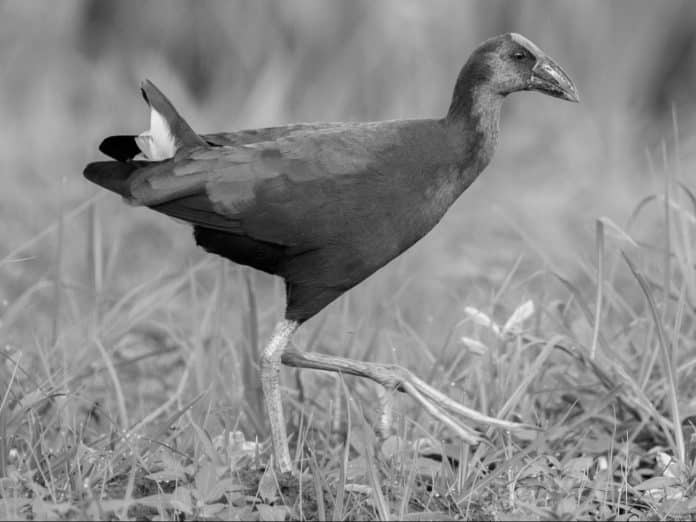Introduction to the African Swamphen in Tanzania
The African swamphen in Tanzania, also known as the purple swamphen or the African purple gallinule, is a large, colorful bird that is found in wetlands across sub-Saharan Africa, the Middle East, southern Europe, and southern Asia. In Tanzania, the African swamphen is a common resident of wetlands, including lakes, rivers, swamps, and marshes.
Habitat and Distribution of the African Swamphen

The African swamphen is a wetland bird that prefers habitats with dense vegetation, including reeds, rushes, and papyrus. They are found in both freshwater and saltwater wetlands, including lakes, rivers, swamps, and marshes. In Tanzania, the African swamphen is found throughout the country, from the wetlands of the Serengeti to the coastal wetlands of Zanzibar.
Physical Characteristics of the African Swamphen
The African swamphen is a large bird, measuring up to 18 inches in length and weighing up to 1.5 pounds. They have a distinctive appearance, with a bright purple-blue plumage, a red beak, and a red and yellow frontal shield above the beak. Their long legs and toes are also red. They have a short tail and long, pointed wings, which they use to fly short distances.
Behavior and Feeding Habits of the African Swamphen
The African swamphen is a highly social bird that is often found in small groups or pairs. They are active during the day and spend much of their time foraging for food. Their diet consists of a variety of plant and animal matter, including seeds, fruits, leaves, insects, snails, and small fish. They are also known to raid crops, which can make them unpopular with farmers.
Breeding and Nesting Patterns of the African Swamphen

The breeding season for the African swamphen in Tanzania is from November to June. During this time, they build large, floating nests in dense vegetation near the water’s edge. The female lays between 3 and 6 eggs, which are incubated by both parents for around 3 weeks. The chicks are born covered in down and are able to leave the nest within a few hours of hatching.
Conservation Status of the African Swamphen in Tanzania
The African swamphen is classified as a species of least concern by the International Union for Conservation of Nature (IUCN). However, their populations are declining in many parts of their range, including Tanzania. Wetland destruction, pollution, and hunting are the main threats to their survival.
Threats and Challenges Faced by the African Swamphen
The African swamphen faces a number of threats and challenges in Tanzania. Wetland destruction and pollution are the biggest threats, with many wetlands being drained or filled in for agriculture and development. Hunting, both for food and for sport, is also a problem, as is the use of pesticides and other chemicals that contaminate the birds’ food and water sources.
Efforts and Initiatives for the Conservation of the African Swamphen in Tanzania
Several initiatives are underway in Tanzania to protect the African swamphen and its habitat. These include the establishment of protected wetland areas, such as the Kilombero Wetlands Ramsar Site, and the implementation of wetland conservation and management plans. There are also efforts to raise awareness among local communities about the importance of wetlands and the need to protect them.
Best Places to Spot the African Swamphen in Tanzania
If you’re interested in spotting the African swamphen in Tanzania, there are several places where you’re likely to see them. Some of the best places include the Kilombero Wetlands, Lake Victoria, the Rufiji River Delta, and the coastal wetlands of Zanzibar.
Conclusion: Celebrating the Beauty of the African Swamphen in Tanzania

The African swamphen may not be as well-known as some of Tanzania’s other wildlife, but it is a beautiful and important wetland inhabitant that deserves our attention and protection. By supporting initiatives to conserve wetlands and raise awareness about the importance of these habitats, we can help ensure that the African swamphen and other wetland creatures continue to thrive in Tanzania and beyond.
Final Thoughts
The African swamphen is a fascinating bird that is often overlooked in Tanzania’s rich and diverse wildlife. However, its vibrant plumage, social behavior, and important role in wetland ecosystems make it a species that deserves our attention and protection. By learning more about the African swamphen and supporting conservation efforts, we can help ensure that this beautiful bird continues to thrive in Tanzania and beyond.


































